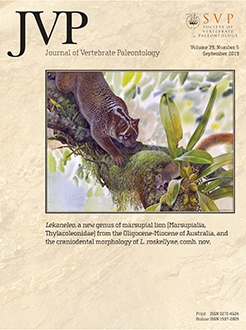Recent molecular analyses suggest that the evolutionary history of Cingulata (Xenarthra) could be more complex than believed previously. An ancient divergence was proposed for armadillos, recognizing two large monophyletic groups: Dasypodidae (including Dasypodinae) and Chlamyphoridae (including Euphractinae, Tolypeutinae, and Chlamyphorinae). Extant Chlamyphorinae (fairy armadillos) are among the most bizarre, elusive, and unknown mammals of the world. Here, we report the first accurate fossil record of this enigmatic xenarthran from the upper Miocene of the Argentine Pampas in southern South America, which represents a new genus and species (Chlamyphractus dimartinoi, gen. et sp. nov.). The phylogenetic analysis reflects the monophyly of the chlamyphorines. It is well supported by several unambiguous synapomorphies and includes the new fossil taxon as a sister group of the two extant species. This new taxon represents the most basal lineage among Chlamyphorinae and increases its diversity. The morphology of the forelimb suggests that it would have been a good digger, although, unlike extant species, it would not have had ‘fully’ subterranean habits.
How to translate text using browser tools
14 April 2020
A New Fairy Armadillo (Cingulata, Chlamyphorinae) from the Upper Miocene of Argentina: First Fossil Record of the Most Enigmatic Xenarthra
Daniel Barasoain,
Rodrigo L. Tomassini,
Alfredo E. Zurita,
Claudia I. Montalvo,
Mariella Superina
ACCESS THE FULL ARTICLE






